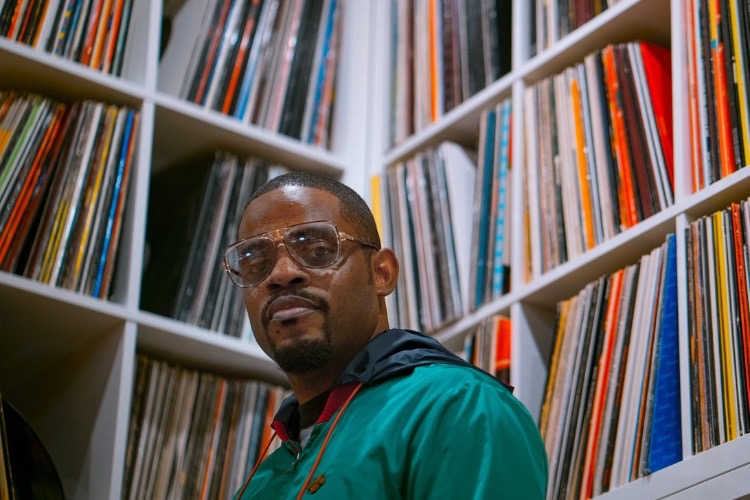Sound is Everywhere: A Conversation with Jeff Coffin (Part One)
|
Getting your Trinity Audio player ready...
|
As this author sits at home recovering, it is impossible not to consider the immense downsides of the coronavirus. Almost six and a half million people have died worldwide from the virus. In such times, it is often thrust upon the artist to lift the populace’s spirits above their dire surroundings. As gigs dried up and tours became grounded, musicians increasingly focused on honing their craft, often with an eye toward music that will delight and, perhaps, provide listeners an escape from their surroundings. While this descriptor applies to many artists over the last two and a half years, saxophonist Jeff Coffin’s Between Dreaming and Joy (Ear Up, 2022) is the epitome of this mindset.
Coffin is perhaps best known for his time as a sideman in two high-powered bands. First was his fourteen-year stint with Béla Fleck and the Flecktones, an ensemble that has forged its own diverse sound palate featuring its leader’s banjo and Future Man’s drumitar. For another fourteen years, Coffin has been with the Dave Matthews Band, providing solos rooted in the tradition of jazz music to audiences generally more steeped in rock. With the pandemic forcing the Dave Matthews Band to stop touring, Coffin turned his attention to composing new music. He became so focused on the task that he produced six or seven albums worth of tunes.
The first of these releases, Between Dreaming and Joy, is a direct affront to social distancing’s cessative pressures on community. Relying on modern technology, Coffin assembled a wide range of artists for the record, including DJ Logic, Michael League, Robben Ford, Chester Thompson, Felix Pastorius, Marcus King, Jennifer Hartswick, Keith Carlock, and Chris Wood. None of the tracks feature the same ensembles, and as a result, each sounds incredibly distinct. And where virology mandated an end to travel, particularly overseas, Coffin brought the sounds of the outside world and the homestead together. Across the album’s ten tracks, instruments range from Morrocan frame drums to a bungee chair; from the jingle of an ice cream truck to the West African ngoni.
Between Dreaming and Joy is a fascinating listen because it is incredibly upbeat, funky, and makes you want to groove. While the music may not as cogently fight COVID as this author’s Paxlovid, it helps provide some relief at a level far deeper than the mere physical that pharmaceuticals could not even try to reach.
We sat down with Coffin to discuss the album, how it came together, and his times with both the Flecktones and the Dave Matthews Band.
PostGenre: The pandemic provided you the first opportunity in over twenty-five years to focus heavily on composing. How can that ability to dedicate extra resources be heard on the Between Dreaming and Joy?
Jeff Coffin: Well, normally, my process gets interrupted by things like going back on the road or teaching. The pandemic, in a way, gave me a wide-open slate. The lack of other interruptions led to a particular type of workflow that allowed me to dig in and spend time composing.
PG: Between Dreaming and Joy is a very upbeat record. When you were putting it together, was it difficult maintaining that positive attitude in light of everything else happening in the world at that time?
JC: It was. But I was thankful that I had the opportunity to make something out of that time. I was able to give my friends – most of whom were out of work due to the virus – work.
PG: Generally, the different parts were recorded remotely, correct? Compared to having musicians recording in the same room.
JC: Yeah, most everything was remote. There were only a few occasions where we were in the same room. Actually, bassist Viktor Krauss and drummer Jordan Perlson are the only people I played with in person for almost two years. We have a trio record coming out at the end of the year.
PG: Was recording the album remotely more difficult than if you were all in the same room?
JC: It was challenging to make the parts come together seamlessly. I wanted to ensure that the music retained the vibe I was going for, and working remotely made that more difficult. I ultimately relied on the other musicians to make it work, and they came through.
PG: You composed so many songs during the pandemic that you have six or seven albums worth of music. Do you plan to release the other music at some point?
JC: Yeah, that is the plan. The ones not on this album sound very different from this album. Three of the future records are with my band. The other three are similar to this album in the sense that I shared them with people before they played them with me. For all of the tracks, as I finished recording each, I grouped them with others that sounded complimentary to them and made albums that way.
PG: So, to make the albums, you needed to rely on genre classifications to some extent?
JC: No, the pairings were less along genre lines and more like some shared aesthetics across certain tracks. For instance, while there is also a lot more going on with Between Dreaming and Joy, one thread is the idea of borrowing instrumentation or musical ideas from other cultures. You hear that across the tracks on this record even though, in terms of general aesthetics, they don’t adhere to some broader genre concept.
PG: In terms of instrumentation from other cultures, at various points, the album features Brazilian percussion, Moroccan frame drums, congas, and the West African ngoni. You could even say that Marcus King’s slide steel guitar brings some Americana influences. When putting together the pieces, how do you know which ideas will sound well together and which will not?
JC: Honestly, I’m not always sure. It is a big experiment. Ultimately, I’m looking for musicians that I know I trust deeply and that I know will serve the music. To a large degree, I put the music in the other artists’ hands. When I started working with the Flecktones, Béla [Fleck] told me that when you have excellent musicians, you have to let them find their way in the music you write for the band. If you do, chances are that they will surprise you. That was an incredible lesson, and I’ve generally followed it. I don’t give anyone too much direction. I’m not going to tell Keith Carlock how to play drums, Felix Pastorious how to play bass, Robben Ford how to play guitar, or Marcus King how to play slide steel. Instead, you allow them to bring their creativity into the music.
PG: In other words, you try to make sure that they contribute themselves.
JC: Absolutely. Ultimately it is their sound I want for the track, and their individual spirit gives that sound I am seeking, not some conception that I, or anyone else, has on how they should approach music.
PG: Each track on Between Dreaming and Joy features a different arrangement of artists. Did you intend to feature a different group on each song instead of one consistent band, or was it a practical consideration more than an artistic one?
JC: It happened organically. As I was writing tunes, I sent them around to different people. There was not any preset plan. I just dove deep into a very creative place and saw what came out.
PG: One of the more interesting pairings on the album is that combination of Chester Thompson and Felix Pastorius on “In the Belly of the Whale.” Of course, Thompson played drums in Weather Report with Felix’s father, Jaco. This is the first time Felix and Chester have recorded together, correct?
JC: Though Felix and Chester have played together with my band, the Mu’tet, I believe this is the first time they’ve recorded together. However, I didn’t even think about that when I was putting the tune together. Felix just happened to be in town when I was putting the track together and we did a gig together. It hadn’t even occurred to me at the time that Chester was playing drums on the track. In a way, it is historic to have the two of them together, but it just ended up working out that way.
PG: Because of that connection and because Between Dreaming and Joy combines jazz, rock, funk, and different cultural influences, has Weather Report been much of an influence on you?
JC: I listened to Weather Report, but it is hard to say the group significantly influenced my music. In general, I take my influences less from recordings and more from people I have played with over the years. I’ve learned far more from the fourteen years I’ve spent with the Flecktones and the, now, fourteen years I’ve been with Dave [Matthews] than listening to any recordings. Between recording and touring, I’ve spent so much time working on original music, and those experiences shape my music more than anything else. Don’t get me wrong, people like [Joe] Henderson, Sonny [Rollins], Ornette [Coleman], or Miles [Davis] are influences. But they don’t compare to what you learn from actually making music.
PG: Both the Dave Matthews Band and Béla Fleck and the Flecktones have a significant following in the jam band community. Do you see much of a distinction between jam and jazz?
JC: Well, to be honest, I’ve never really understood what people mean but the term “jam band.” It seems like people apply that term to any band that has extended solos. But many types of music have extended solos. I don’t understand a lot of genres, to be honest. I think some people see a distinction between jazz and jam based on how well people can dance to the music. But, to me, you could dance to pretty much any kind of music. That was one epiphany I had when I was with the Flecktones; regardless of the crazy time signatures we were using, people were still dancing. If the rhythms are seamless, you can make them sound like a pulse, regardless of time signature, and people will move to it
PG: Do you feel like the increased focus on avant-garde experimentalism undermined the danceability of a lot of improvised music? If you go back and look at, say, Duke Ellington’s Orchestra, many people danced to their music. Far fewer dance to Cecil Taylor.
JC: Well, there are just so many offshoots of jazz music. Look at the recordings from 1959 alone: Miles’ Kind of Blue (Columbia, 1959), [Charles] Mingus’ Mingus Ah Um (Columbia, 1959), Ornette’s Shape of Jazz to Come (Atlantic, 1959), Dave Brubeck’s Time Out (Columbia, 1959).
PG: Even Sun Ra Arkestra’s Jazz in Silhouette (1959) and Art Blakey’s Moanin’ (Blue Note, 1959). And [John] Coltrane was recording Giant Steps (Atlantic, 1960), though it was released the following year.
JC: Right. And those were all significantly different from one another. We are still dealing with the repercussions of those records and so many others. It makes sense that the music naturally evolved to encompass new expansive ideas. I mean, Miles alone was constantly pushing the music in new directions during his career. Sometimes when the music goes in a new direction, however, not all listeners follow it. In some cases, the music ends up being more fun to play than to listen to. I think it does turn some people off because there’s often less guidance for the listener to figure out where the music is going and how they should feel about what they are hearing. One of the things I love about being with the Dave Matthews Band is that I get to draw ideas from these legendary musicians, incorporate them into my solos, and expose them to listeners who maybe are not as familiar with the original source. And I get to talk about those players in interviews or when I am teaching. It is wonderful to be able to share their work in those ways.
PG: Was it daunting to fill LeRoi Moore’s role in the Dave Matthews Band?
JC: Well, when I started playing with Dave, it was only supposed to be for a temporary period. Maybe two to four months. But then tragically, a month and a half into LeRoi’s recovery, he passed. You can never replace someone, and I never thought of my joining the band as somehow replacing LeRoi. It would have been impossible to replace him. He had his own sound, concept, and approach to music which were profoundly beautiful. LeRoi was also a beautiful improviser. Most musicians get to the saxophone through the music; I think that LeRoi did the reverse and got to the music through his saxophone. He was an incredibly musical soul. I listened to him so much to learn the Band’s music. I’ve listened to LeRoi as much as I’ve listened to [John Col]trane, Sonny [Rollins], Joe [Henderson], or Wayne Shorter. I spent so many hours learning the nuances of the music, and now he’s one of my influences. Every night, I play things that come directly out of him or are an homage to him, not only as a fallen musician but as a friend.
PG: Unlike the rest of In Between Dreaming and Joy, where you have several collaborators, on “Spinning Plates” you play all of the parts. Was it always your intention to have one track without other musicians on it?
JC: No, I didn’t plan the record in any way. I ended up putting the record together after everything was done. But the placement of “Spinning Plates” among the tracks on the record was purposefully done. I intended the song to be a sort of breath in the middle of the record. It was a break from the intensity of the other tracks. It was very important to me that the record has a flow to it. That is something I learned when I was with the Flecktones. You can have a great tune, but if you mess up the sequence on the record, it can kill the project.
PG: What did you enjoy most about your time with the Flecktones?
JC: There are so many facets to this, but I grew up musically with what I learned from being with the Flecktones. I’m eternally grateful for my time with the band. I can’t overstate my musical growth during the fourteen years I was with the Flecktones. They took a chance on me when I was a total unknown and invited me into their world to play their music. At first, the audience knew the music even better than I did. I also learned a lot about how to be a better person. I learned a lot about humility and how to better communicate with others. Béla and I would take long walks and talk about many musical and personal things. All of the crew and musicians are family, and I love them dearly. At the end of the day, we would throw around these little red hippos. I still have one in my studio and see it every day as a reminder that they are a part of my journey.
Click here for part two of our conversation with Jeff Coffin where we will dig deeper into Between Dreaming and Joy, including Jeff’s use of an ice cream truck jingle, a bungee chord chair, and more. We also get into a theoretical discussion on the concept of music as well as three masters of the music – Charles Lloyd, Hermeto Pascoal, and Ornette Coleman.
Between Dreaming and Joy is now available on Ear Up Records. It can be purchased on Bandcamp.
More Information on Jeff Coffin can be found on his website.
Photo credit: Rodrigo Simas




2 thoughts on “Sound is Everywhere: A Conversation with Jeff Coffin (Part One)”